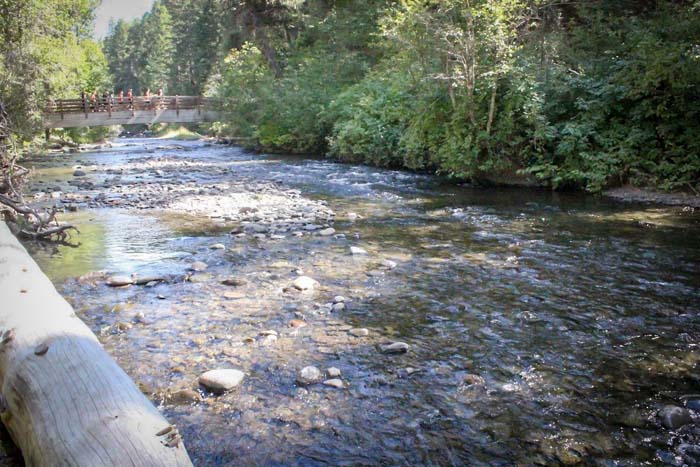Oregon’s worst natural disasters
Published 2:36 pm Monday, April 7, 2008
Wicked winds and terrifying floods have hit Union and Wallowa counties over the past 100 years.
Trending
Still, the counties have been spared the worst of Mother Nature’s wrath.
That is the conclusion one can draw from reading Willam L. Sullivan’s new book – “Oregon’s Greatest Natural Disasters” (Navillus Press). Sullivan’s book chronicles the most famous of Oregon’s natural calamities, telling stories of the state’s worst floods, fires, volcanic eruptions, wind storms and more. The Columbus Day Storm of 1962, Mount St. Helen’s 1980 eruption and the 1948 Vanport flood that destroyed a city of 18,700 are discussed in detail.
The 264-page book also mentions natural disasters of Union and Wallowa counties. Their magnitudes are noteworthy but not to the point that they warrant centerpiece status in Sullivan’s fast-paced book. This of course is ultimately a good thing. A very good thing
Trending
The new book’s chapter on floods reviews how rising waters devastated parts of Oregon in the winter of 1964-65. Sullivan notes that in early 1965 Eastern Oregon was hit hardest by flooding as rivers like the Grande Ronde reached record levels.
The Grande Ronde’s rising waters wreaked havoc in La Grande, according to accounts in February 1965 Observer articles. Things got so bad that in early February about 400 homes with 1,000 people were evacuated in a 24-hour period. Northwest La Grande was particularly ravaged, with 175 people being evacuated.
The most dramatic flood damage occurred on Jan. 30, 1965, when Riverside Park’s bridge was picked up by floodwaters and dumped 75 yards downstream before settling in 40 feet of water.
So desperate was the situation that people pushed old cars into the Grande Ronde River to alter its flow and save buildings. A photo in the Feb. 3, 1965, Observer shows Union County Sheriff Bill Moore doing this with the help of emergency volunteers.
Downtown La Grande was not ravaged by high waters. But the threat of flooding was real. So harrowing that when EOU’s men’s basketball team played Portland State on Jan. 30 at Eastern, local business owners at the game were urged to leave and go downtown and place sandbags in front of their stores.
The Observer ran one of the most alarming headlines in its history on Jan. 30, 1965, proclaiming “CITY ENDANGERED.” It was not until a week later that flood waters began subsiding in the Grande Ronde Valley.
Although La Grande’s 1965 flood is not covered in detail in Sullivan’s book, several others in Northeast Oregon are. They include:
• The Heppner flood of June 14, 1903. The flood was caused by a thunderstorm. Water poured into Willow Creek’s canyon and nothing absorbed it because there was no forest or soil. A 6-foot wall of water thus began streaming toward Heppner via Willow Creek.
The water roared but most people were not alarmed, thinking that it was the sound of more thunder, Sullivan said. The flood hit Heppner at 5:16 p.m., as a 600-foot-wide roaring wall of water demolished the town. The flood killed 259 people, nearly a quarter of the town’s population.
“Today as you walk through Heppner’s cemetery, you’ll see grave after grave with the same dread date – June 14, 1903,” Sullivan wrote.
• Three flash floods that struck Mitchell in 1889, 1904 and 1956. Each flood wiped out most of the buildings on the lower side of the main street. Four people died in the 1889 flood, two in 1904, but miraculously none died in 1956. The third flood, though, swept away four bridges, 11 houses, three trailers, a garage, a service station and dozens of cars.
Amazingly, Sullivan writes, the worst injury anyone in Mitchell suffered was a sprained ankle.
Sullivan’s book also discusses some of the at least 60 tornadoes known to have hit Oregon. They include a Morrow County twister that killed six people and demolished 30 buildings in 1888.
Sullivan also writes of a Wallowa County tornado in 1968 that ravaged 3,000 acres of timber. That tornado was seen by few but is believed to be the fiercest to ever hit Oregon, according to a 2000 book by George Taylor and Raymond Hatton, “The Oregon Weather Book.”
Taylor and Hatton wrote that ” … It may well have been one of the strongest tornadoes ever to strike the Northwest.”
The late afternoon tornado hit an area near Thomason Meadows and devastated an area along a path one-half to two miles wide and eight to ten miles long. More than 40 million board feet of timber were blown down during the storm.
Several men working in the area saw the tornado hit but nobody was injured, according to the June 20, 1968, Wallowa County Chieftain. One man reported that the tornado sounded like “a hundred freight trains roaring past.”
Another witness reported that the sky was “as dark as coal” just before the storm hit. The five-minute tornado traveled north and was accompanied by golf ball-sized hail.
“Oregon’s Greatest Natural Disasters” is one of about 12 books Sullivan has written about the state. A fifth-generation Oregonian, Sullivan who lives in Eugene, has an English degree from Cornell University and a master’s degree in German from the University of Oregon.









